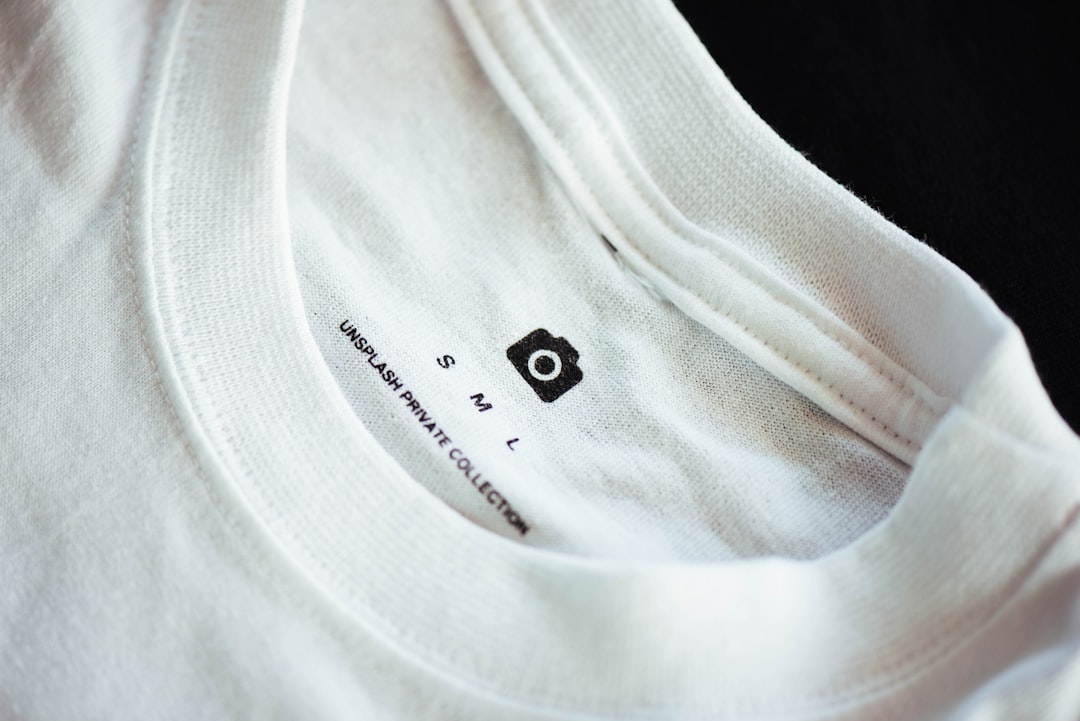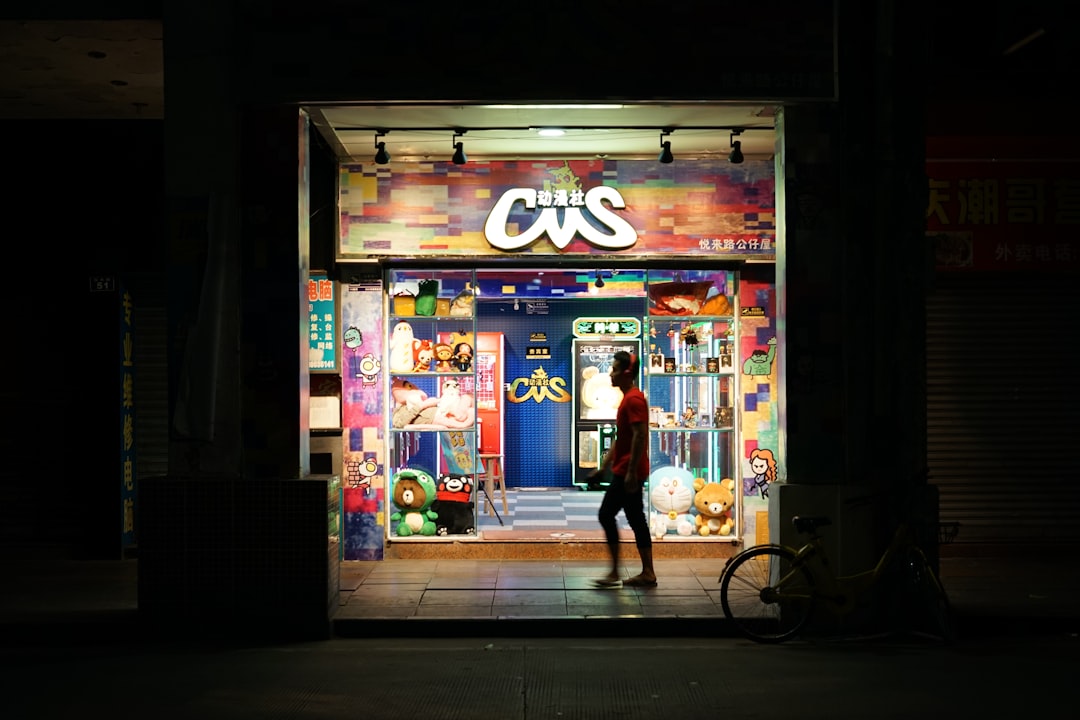

Engage prospects with a scan and streamline customer engagement with FREE QR code marketing tools by Sona – no strings attached!
Create a Free QR CodeFree consultation

No commitment

Engage prospects with a scan and streamline customer engagement with FREE QR code marketing tools by Sona – no strings attached!
Create a Free QR CodeFree consultation

No commitment
Children's clothing stores are navigating a rapidly transforming retail landscape where bridging physical and digital experiences has become essential to stand out. Parents, often pressed for time, want instant access to product information, personalized offers, and seamless service. Children expect interactive shopping that feels fun and tailored. E-commerce has advanced, yet physical stores remain critical for discovery, trying on outfits, and enjoying the shopping journey as a family.
The missing link is often the connection between in-store visits and digital follow-up. Without a simple bridge, high-value prospects slip away and CRM profiles stay incomplete. Many families engage with in-store displays, try on outfits, and ask staff questions, yet never fill out a form or sign up for loyalty. Modern QR codes are redefining this dynamic. By turning tags, signs, and product packaging into digital conduits, children’s clothing brands can streamline in-store interactions, gather real-time insights about family preferences, and reduce friction that leads to lost opportunities.
QR codes in marketing close the loop between offline browsing and online action. They enable app-free experiences that delight families and equip retailers with the data they need to personalize, measure, and grow. This guide details practical, high-impact QR strategies you can deploy today to enrich the shopping experience, build richer customer profiles, and drive measurable revenue in children’s fashion retail.

Children’s clothing retailers commonly report frustration with missed opportunities due to anonymous shoppers who leave no digital trace. QR codes provide a frictionless invitation for parents and kids to participate in digital experiences, bridging the gap and capturing interest that would otherwise remain hidden. When thoughtfully executed, QR strategies can convert casual curiosity into trackable engagement, reduce staff burden, and create a more playful, informed shopping experience for families.
Start by replacing analog processes that slow down the journey. Paper sign-up sheets, static size charts, and printed promo flyers are easily overlooked or quickly outdated. QR-powered landing pages, digital lookbooks, and one-scan loyalty enrollment compress steps into a single action that is trackable in real time with the Sona QR product overview. As you modernize in-store touchpoints, define clear engagement metrics and optimize code placement to learn which experiences produce the most value.
For example, QR-based loyalty enrollment at the POS reduces manual data entry and minimizes abandoned sign-ups. Dynamic hangtag codes that surface curated outfits or video care guides help parents buy confidently and cut down on returns. Together, these moves create a cycle where every in-store interaction feeds your digital engine while making shopping more delightful.

Retailers often face a flood of unqualified or anonymous traffic. Families engage with displays or browse casually, yet never surface as actionable leads. Traditional analytics fail to capture these moments, leaving growth teams in the dark. QR codes solve this by transforming passive interest into measurable action, with app-free experiences that are fast and friendly for busy parents and curious kids.
QR codes are uniquely suited to children’s apparel because the purchase journey blends practical details with playful discovery. Parents need sizing guidance, fabric information, and reviews. Kids are drawn to colors, characters, and interactive content. A simple scan can satisfy both groups with rich content while quietly logging intent data for smarter follow-up.
In practice, children’s retailers can upgrade common materials such as window decals, shelf talkers, hangtags, shopping bag stuffers, and event flyers. The result is clear: the store stays vibrant and informative, marketing becomes measurable, and families enjoy a seamless blend of physical and digital experiences tailored to their needs.

A persistent challenge in children’s fashion retail is personalizing offers and follow-ups with incomplete or outdated customer data. QR codes offer a flexible toolkit that adapts to different goals, from education and convenience to data capture and loyalty. Choosing the right format and destination is critical to creating valuable outcomes.
Dynamic, updateable QR codes are recommended for most retail scenarios. They let you edit destinations as campaigns evolve, personalize content by location or time, and capture analytics without reprinting. Static QR codes are useful for unchanging assets like a legally required care manual or a permanent brand story page.
With Sona QR, you can generate, manage, and update all of these formats in one place. Pair each format with a clear destination. For example, use forms for loyalty and feedback, web links for product education and bundles, and Wi-Fi access for in-store browsing that flows into remarketing.

Store teams often struggle to pinpoint where their highest-potential leads convert or drop off. The most powerful QR opportunities are found where families already linger or seek information. Map the journey from the sidewalk to the checkout and beyond, then insert QR touchpoints that remove friction and capture intent.
Think of QR placements as sensors along the path to purchase. Codes in the window and storefronts engage after-hours passersby. Fitting room codes assist with sizing or alternative options. Checkout codes enroll families into programs that deepen the relationship. Post-purchase codes invite reviews or teach proper care, which reduces returns and improves satisfaction.
By embedding trackable QR codes in these touchpoints, you gain visibility into the true path to purchase. Campaigns become connected rather than disjointed, and every interaction builds on the last to create a coherent story for each family.
Children’s clothing retailers sometimes miss out on upsell, cross-sell, and post-purchase relationships simply because customer intent is not captured in context. QR experiences can turn these missed moments into structured data that fuels smart follow-up and better merchandising decisions. Focus on use cases that align with the most common family interactions and store priorities.
When developing use cases, pair the QR code format with the right destination and a clear promise. For example, a hangtag code that says “Scan to see if your size is in stock” sets an expectation and delivers immediate value. Over time, these micro-experiences build trust and contribute to higher retention.
Each of these use cases contributes to measurable outcomes such as increased email capture, higher scan-to-cart rates, improved promo redemption, and post-purchase repeat visits. When executed with dynamic QR and proper attribution, the insights compound across seasons.
Every QR scan is a signal that captures intent, context, and behavior. By deploying multiple codes across touchpoints, you can segment your audience automatically and fuel precise retargeting and follow-up campaigns that respect each family’s journey. The key is to tag scans meaningfully and sync them to your CRM and ad platforms in real time.
Children’s apparel brands benefit from distinguishing adult-led actions from child interest. A parent scanning a size guide carries different intent than a child scanning a character lookbook. With Sona QR, you can create journey-specific codes, capture intent-rich metadata such as location and time, and route families into tailored flows that reflect their priorities.
See the Sona retargeting playbook for step-by-step audience activation powered by first-party intent.
QR codes act as connectors across your offline and digital campaigns, enabling real-time engagement and richer data collection. They serve as the onramp to your digital ecosystem from any physical touchpoint. For children’s clothing stores, this means your windows, hangtags, catalogs, events, and shopping bags can all trigger measurable journeys that continue well after the visit.
A cohesive strategy unifies messaging and data across channels. For example, a back-to-school campaign can tie window decals, in-store displays, local posters, Instagram Stories, and email into a single promo with QR codes that adapt the destination based on placement. This consistency reduces confusion and increases conversion because families receive the same theme, offer, and promise everywhere they look.
For tying offline scans to revenue, see Sona offline attribution.
Store teams often hesitate to deploy QR strategies because of perceived complexity or uncertainty about ROI. A clear, stepwise plan eliminates guesswork and ensures you collect data you can act on. The goal is to start simple, deploy quickly, and iterate based on what you learn.
Begin with one or two high-impact use cases such as hangtag product discovery and checkout loyalty enrollment. Choose dynamic QR codes so you can edit destinations as you refine the experience. Measure scan volume, conversion to next action, and revenue contribution to build confidence and expand.
Define a focused goal such as increasing loyalty sign-ups, highlighting new arrivals, or capturing RSVPs for a weekend styling event. Align the QR code’s purpose with a specific business outcome such as growing your email list by a set percentage or lifting attach rate on accessories.
Clarify what the scanner receives. For example, “Scan for outfit inspiration,” “Scan to see if your size is in stock,” or “Scan to join birthday rewards.” Make the promise clear and the payoff instant so families feel rewarded for scanning.
Select dynamic QR codes for any campaign that needs measurement or future flexibility. Dynamic codes allow you to track scans, update destinations, and run A/B tests without reprinting. Static QR codes can be reserved for unchanging content such as a permanent brand story video.
Choose the right format for your goal. Use web links for product education and bundles, forms for data capture and RSVPs, and app downloads for long-term engagement. Tools like Sona QR make it easy to generate multiple formats from one dashboard and keep them organized.
Customize the code with brand colors, a subtle logo in the center, and a clear frame that reads easily at a glance. Pair the code with a benefit-driven CTA such as “Scan to save 10 percent,” “Scan for size + fit tips,” or “Scan to join birthday club.”
Test scanning on different devices and from different angles. Validate both print sizes and digital screen use. Check that the landing page loads quickly, is thumb-friendly, and mirrors the CTA promise. Add UTM parameters so your analytics reflect source and placement.
Place codes where families naturally pause. Best bets include entrance displays, new-arrival tables, fitting room mirrors, checkout counters, shopping bag inserts, and window decals. For each placement, tailor the CTA to the moment. A fitting room might read “Scan for alternate sizes,” while a window decal might promise “Scan for early access.”
Launch with unique codes per placement. This lets you learn which stations deliver scans and next actions. Update creative weekly with small changes so you keep the store fresh and continually test what works.
Monitor scan volume, click-through, conversion to next step, and revenue influenced. Use a dashboard such as Sona QR to analyze scans by time, location, and device. Identify bottlenecks such as high scan rates but low enrollments, then test new headlines or shorter forms to improve outcomes.
Roll learnings into your next campaign cycle. Promote winning offers to more placements and retire underperformers. Over time, this creates a portfolio of proven QR experiences you can rely on season after season.
A major barrier to revenue optimization in children’s clothing stores is connecting engagement signals to purchases. Real-time QR analytics change this by illuminating what happens after the scan and how that activity influences checkout decisions. Without this visibility, teams are left guessing, and budgets drift toward tactics that feel good but do not move the needle.
A modern stack links scans to sessions, sessions to actions, and actions to revenue. With Sona QR you capture real-world engagement data. With Sona.com you turn those signals into attribution and audience insights that guide investment and creative choices across the funnel.
The outcome is a feedback loop that turns experimentation into a growth engine. You gain the confidence to scale what works, sunset what does not, and prove the ROI of QR-driven engagement to leaders and teams.
Store-wide adoption is often slowed by uneven implementation or fuzzy measurement. The most successful programs treat QR codes as a system, not one-off tactics. Standardize your approach, educate staff, and keep the experience consistent across placements so families know what to expect when they scan.
Aim for simplicity. Short, benefit-led CTAs outperform vague prompts. Flows should require as few taps as possible and deliver immediate value such as size guidance, a savings perk, or a curated set of looks for a child’s age group. Over time, automation can make these touchpoints even more powerful.
Creative deployment ideas include age-specific QR codes on tags that surface curated outfits, or mini “style passports” for kids with QR stamps earned at each station in the store. Checkout scans can automatically enroll new families into segmented retention programs so your team can focus on service while automation handles follow-up.

Retailers often ask how to move beyond basic information scans to build experiences that families remember. The answer is to combine storytelling with utility and to invite families into the process. When done well, QR-powered initiatives feel fun and personal while delivering valuable data for the brand.
Consider how your brand pillars can come to life through QR. If sustainability matters, tell a transparent sourcing story and invite participation in recycling. If community is core, make voting, feedback, and event RSVPs easy to access via scan. For inspiration on embedded QR codes, explore how brands are blending product and digital to boost engagement.
These creative approaches entertain, educate, and capture intent signals without extra staff burden. They help you iterate quickly and align product, merchandising, and marketing around the family voices that matter most.
Store teams often invest in engagement tactics that are hard to measure or lack a clear connection to revenue. QR codes change that. They transform every surface into a digital entry point and every moment of interest into a trackable action. For children’s clothing brands, this means a better store experience for families and a clearer growth path for the business.
Here is what QR strategies deliver when executed with intent:
With Sona QR, you have everything you need to capture demand at the source and convert it into measurable results. Start with one or two high-impact use cases, generate your first dynamic QR codes in minutes, and build from there. Start creating QR codes for free. As your scans grow, Sona.com helps connect engagement to pipeline and revenue so you can scale with confidence and keep delighting families season after season.
QR codes have revolutionized children’s clothing stores by transforming traditional shopping into an interactive, engaging experience that drives customer loyalty and boosts sales. Whether it’s streamlining product discovery, offering exclusive promotions, or providing instant access to size guides and style tips, QR codes turn every in-store moment into an opportunity for meaningful connection and increased revenue.
Imagine shoppers effortlessly scanning codes to unlock personalized offers or find complementary items, all while you gain real-time insights into which campaigns truly resonate. With Sona QR, you can create dynamic, trackable QR codes in seconds, update your promotions instantly without the need to reprint, and link every scan directly to sales performance. No guesswork, just smarter engagement that grows your brand and bottom line.
Start for free with Sona QR today and transform every QR scan into a loyal customer and a measurable sale.
The article does not list specific children's clothing stores by name but highlights that many children's clothing brands use modern QR codes to enhance in-store experiences.
QR codes improve the shopping experience by providing instant access to product information, sizing guides, styling tips, loyalty enrollment, and interactive content, creating a seamless and playful experience for families.
By scanning QR codes, you can access size availability, material details, care instructions, styling tips, product reviews, inventory status, loyalty programs, promotions, and event information.
The article does not specify brand names but explains that many children's clothing retailers use interactive QR codes for product discovery, loyalty enrollment, promotions, and customer engagement.
Children's clothing stores use QR codes to bridge offline and online experiences, capture customer data, personalize offers, track engagement, enable loyalty sign-ups, promote events, and provide dynamic, updateable content that enhances customer interaction.
Use Sona QR's trackable codes to improve customer acquisition and engagement today.
Create Your FREE Trackable QR Code in SecondsJoin results-focused teams combining Sona Platform automation with advanced Google Ads strategies to scale lead generation

Connect your existing CRM

Free Account Enrichment

No setup fees
No commitment required

Free consultation

Get a custom Google Ads roadmap for your business






Launch campaigns that generate qualified leads in 30 days or less.
